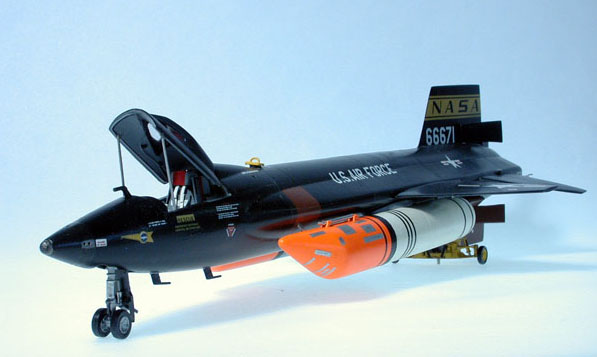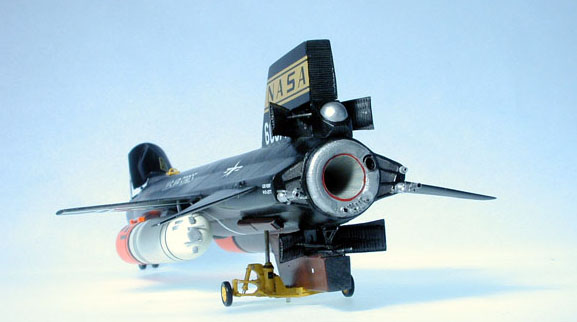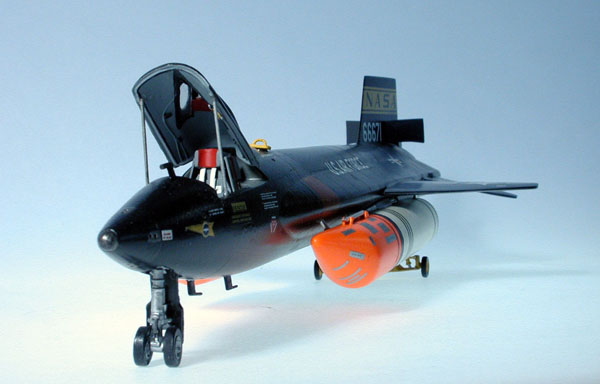|
North
American X-15A-2
by
Phil Brandt
|

|
|
North
American X-15A-2
|
images
by Milton Bell

HyperScale is proudly sponsored by
Squadron
I've had a particular attachment to this arguably most famous
X-plane ever since 1969 when, during the return from a SEA
chopper-hauling trip, our Dover-based C-133A was diverted down to
Edwards AFB to carry the X-15A-2 to the USAF Museum. Fate smiled twice
on Bondo when, on a later SEA mission that year, his Weenie Wagon was
again diverted to Edwards, this time to carry the Number One
ship--Number Three was destroyed in a crash--to the Smithsonian.
The X-15A-2 started life as a 'plain' X-15 and, after breaking its
back during a heavyweight emergency landing on Mud Lake, was
lengthened and took on external fuel tanks during the rebuild to
become the definitive A-2 version which would go on to set still
unbroken speed records.
The 1/48 Collect-Aire resin kit required moderate effort to
accurize and detail, but it's the only A-2 version out there.
Using Jay Miller's outstanding Aerofax X-15 book and my own closeup
pix taken at the USAF Museum, efforts were primarily directed to the
XLR-99 rocket engine exhaust area which was incorrect and much too
simplified. The "business end" is loaded with numerous drain
tubes, the large hydrogen peroxide-powered turbopump exhaust and the
jettison/dump masts.
Although Collect-Aire included the jettison/dump masts in resin,
they were undersized and very delicate, so I redid them in metal
tubing and wire. The combustion chamber outlet was also reshaped.

The external tanks were 1/2-inch too short. I lengthened them with
plastic sections cut from scrap injected droptanks. External piping
from the tanks, the apparatus on the aft tank ends and the separation
rocket tubes were scratchbuilt.
Seatbelts and various handles were added to the opened cockpit, as
well as details to the inside of the raised canopy.
Various shades of black and metallic were airbrushed to simulate
the Inconel skin of the real thing which somewhat resembles gun
blueing. The model represents the first heavyweight drop with external
tanks, and the rust brown patches represent test ablative coatings in
preparation for the later record-setting missions when the aircraft
was completely coated with white ablative. The differing external tank
color schemes are taken directly from the Aerofax reference and the
multitude of silver stencils on the tank forward sections were
handmade.

The yellow and white Collect-Aire decals were insufficiently opaque
when applied over the black, so a second set was overlaid. I chose to
do the aircraft transport dolly included in the kit because the yellow
contrasts well with the black airframe and NASA logo.
Even with its shortcomings, I enjoyed the Collect-Aire kit so much
that I bought a second, doing it in the all-white ablative scheme with
a scratchbuilt scramjet and extended skids.
Model and Text Copyright © 2001 by
Phil Brandt
Images Copyright © 2001 by Milton
Bell
Page Created 23 May, 2001
Last Updated 04 June, 2007
Back to HyperScale Main
Page
Back to Features
Index
|
Home
| What's New |
Features |
Gallery |
Reviews |
Reference |
Forum |
Search